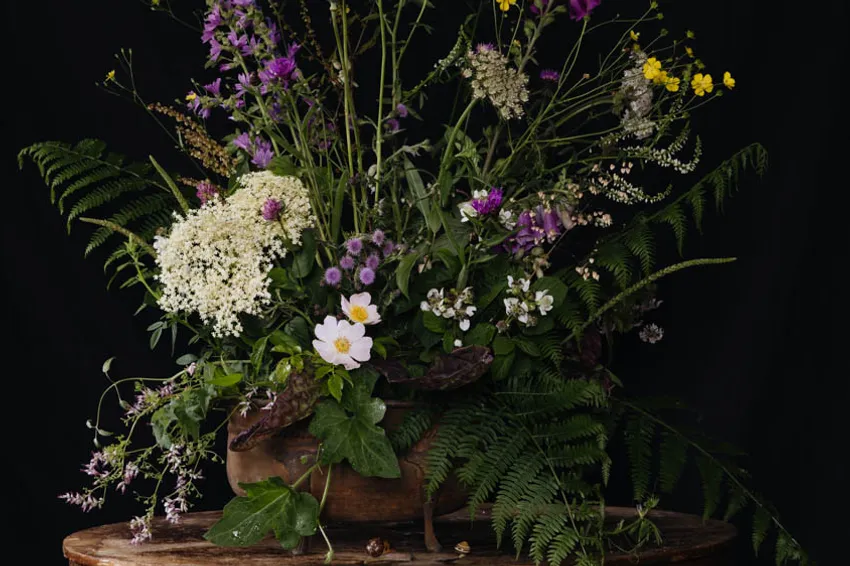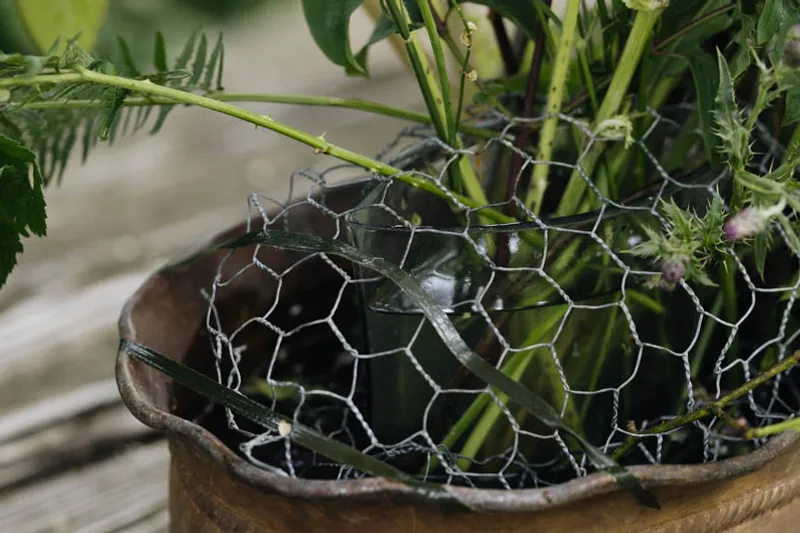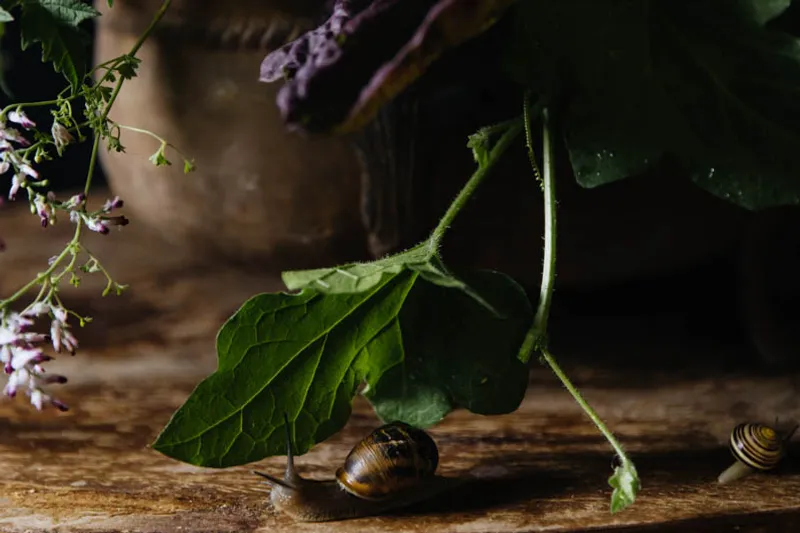Gardeners have a fraught relationship with wild plants and weeds, but there is a growing movement to appreciate the charms and biodiversity benefits of these native plants and early colonisers. To offer a fresh perspective, we’ve elevated typical uninvited garden guests to be the stars of exquisite cut-flower displays, inspired by art and bound to change your mind.

I’ve always been drawn to the work of the 18th-century Dutch still life painters, dynamically lit to increase the contrast of light and dark – a technique known as chiaroscuro. The inspiration for this arrangement came from Jan van Huysum’s painting Flowers in a Vase, and like his painting, it includes wildlife in the form of snails – a reminder that all life is important along the food chain.
Arranging weeds with elder, bracken and dog rose: how to achieve the look

This old metal ornamental vase was perfect for the display with its low, wide curvaceous shape raised on ornate legs. I placed a narrow, elliptical glass vase inside, and added two layers of one-inch gauge chicken wire, secured with pot tape. This helps hold the stems in position, removing the need for floral foam. I then filled both vessels with cool, fresh water. This arrangement includes an array of different species, mostly chosen for their value as food plants for wildlife. Big and bold flowerheads contrast with a host of spiky, soft, rough and smooth leaf shapes. The inclusion of very short stems gives the arrangement depth, while curvaceous stems extending beyond the vase give movement and flow.

The flowers and foliage were picked late the previous evening and conditioned in plenty of water overnight. Each stem was recut before placing in the arrangement. Foliage from leafy plantains, elder and bracken was placed first, starting with a couple of low branches of dogwood to give further support to the taller stems. Umbelliferous flowers of common hogweed, wild carrot, elder and a group of mauve thistles added mass and the dog rose became the focal point. I added uprights in the form of mallow, bramble, poppy seedheads, clover and foxglove, complemented by slim flower spikes of plantain, sorrel and quaking grass, and curvy wisps of white bryony and old man’s beard. The colour scheme involved a harmonious blend of pinks, mauves, creams and whites, with a spattering of yellow from the buttercup on one side, balanced on the other by the slightly finer nipplewort.
Plants used
Briza maxima – greater quaking grass
Briza media – quaking grass
Bryonia dioica – white bryony
Chamaenerion angustifolium – willowherb
Cirsium palustre – marsh thistle
Clematis vitalba – old man’s beard
Cornus sanguinea – dogwood
Daucus carota – wild carrot
Digitalis purpurea – common foxglove
Fumaria officinalis – common fumitory
Heracleum sphondylium – common hogweed
Lapsana communis – nipplewort
Malva sylvestris – common mallow
Melilotus albus – white melilot
Papaver somniferum – opium poppy seedheads
Plantago lanceolata – ribwort plantain
Plantago major – broad-leaved plantain
P. major ‘Atropurpurea’ – purple-leaved plantain
Pteridium aquilinum – bracken
Ranunculus acris – meadow buttercup
Rosa canina – dog rose
Rubus fruticosus – wild bramble
Rumex acetosa – sorrel
Rumex obtusifolius – broad-leaved dock
Sambucus nigra – elder
Silene dioica – red campion
Silene latifolia subsp. alba – white campion
Silene vulgaris – bladder campion
Trifolium pratense – red clover